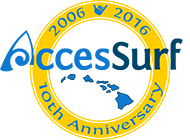Reduced slow wave sleep (SWS) is a powerful predictor for developing high blood pressure in older men, according to new research in Hypertension: Journal of the American Heart Association.
SWS, one of the deeper stages of sleep, is characterized by non-rapid eye movement (non-REM) from which it's difficult to awaken. It's represented by relatively slow, synchronized brain waves called delta activity on an electroencephalogram. Researchers from the Outcomes of Sleep Disorders in Older Men Study (MrOs Sleep Study) found that people with the lowest level of SWS had an 80 percent increased risk of developing high blood pressure.
"Our study shows for the first time that poor quality sleep, reflected by reduced slow wave sleep, puts individuals at significantly increased risk of developing high blood pressure, and that this effect appears to be independent of the influence of breathing pauses during sleep," said Susan Redline, M.D., the study's co-author and Peter C. Farrell Professor of Sleep Medicine in the Department of Medicine at Brigham and Women's Hospital and Beth Israel Deaconess Medical Center, Harvard Medical School in Boston, Mass.
Men who spent less than 4 percent of their sleep time in SWS were significantly more likely to develop high blood pressure during the 3.4 years of the study. Men with reduced SWS had generally poorer sleep quality as measured by shorter sleep duration and more awakenings at night and had more severe sleep apnea than men with higher levels of SWS. However, of all measures of sleep quality, decreased SWS was the most strongly associated with the development of high blood pressure. This relationship was observed even after considering other aspects of sleep quality.















